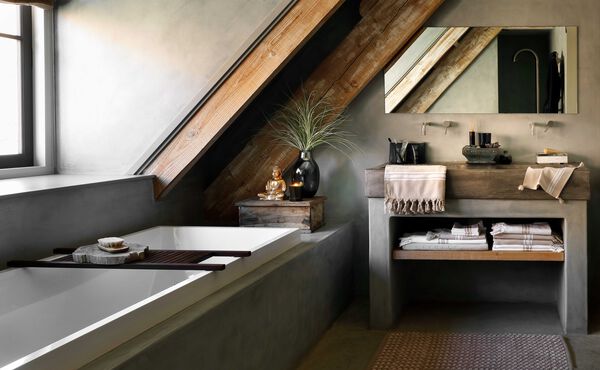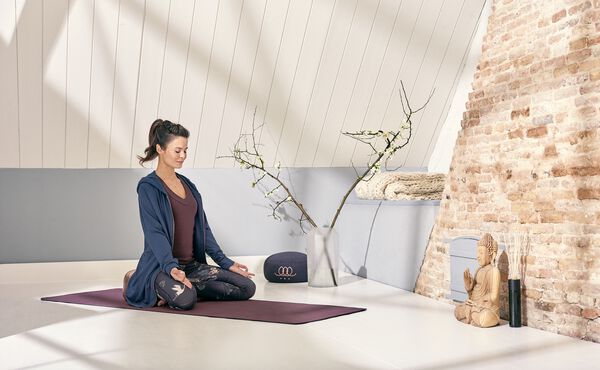Home is meant to be our safest space; our refuge to return to at the end of the day, and the place we practice our most personal and profound traditions. When we give home the credit it deserves, it follows naturally that we’re inspired to create a setting that comforts and supports us, that grounds and re-energizes us for the rest of life’s demands. Amidst the myriad of ways that we can design and decorate our homes – whether colourful or neutral, plentiful or sparse, high design or budget-friendly – the Japanese concept of wabi-sabi is a guiding light for making home a warm, welcoming space for anyone and everyone, but most especially, ourselves.
Wabi-sabi is a difficult notion to sum up, but in essence, it is an idea that captures the beauty of the perfectly imperfect. It celebrates the humbling effects of age and time; the simple, quiet quality of nature; the impermanence and ambiguity of life itself. When we draw on wabi-sabi’s principles for shaping our home, they imbue our sacred spaces with nature’s wisdom: Do more with less. Slow down. Live humbly. Move with intention. Pay attention. Find beauty in unexpected places.
But these seemingly straightforward maxims become more complex when we apply them to the ever-changing whirlwind that is home in the business and busyness of day-to-day life. If your home is anything like mine (i.e. ruled by a small, charming maniac who plucks everything from its place as quickly and wildly as possible), every hour it careens more and more into the vortex of chaos, until by day’s end it feels less like a refuge and more like a stress-inducing mess. This present reality is why I need the wabi-sabi mindset more than ever; to cope with the clutter and to keep bringing my spirit--and my space--back to what’s essential.
So, where does the wabi-sabi way lead us? Onto a path away from the suffocating goals of perfectionism, status, and keeping to convention, instead, welcoming us to create dwellings that are down-to-earth and winsome. It guides us towards home becoming an ever-evolving tableau of things that amuse and inspire, using what nature freely offers to adorn and uplift. It reminds us that our objects can be beautiful (or weird, or curious) for beauty’s sake, and don’t need to be useful in the traditional sense--but upholds that our utilitarian items can be lovely, too. It suggests that society’s measures of success can be very different from our own. Wabi-sabi urges us to delight in the things we own, but not to be defined by them. This way of perceiving the world shifts our minds to see that living simply and treading lightly on the earth can be far more rewarding than always seeking the next luxury. A fellow lover of the wabi-sabi way, Leonard Koren, has written, “Pare down to the essence, but don’t remove the poetry.”
It’s this poetry we’re really after, I believe. We want our homes to be lyrical and warm, playful and intimate, and we don’t achieve any of that poetic charm by having an airless, perfectly staged showroom full of new and shiny things. Instead, let your home breathe and change and be beautiful in its own unique way--even if you have objects that are a little bit, well, ugly. Repair and reuse and reimagine your beloved things over and over again; give thanks for the messiness as it so regularly signals a full life; make friends with the imperfections and the quirks in your home.
Isn’t it often the idiosyncrasies that most endear us to our friends and family members? Well, extend that same grace to every corner of your home, filling each one with plants and pictures and possessions that are prized simply because they remind you of dear ones, places you love, or bring you back to yourself, day after day. In my home, these items include gifts from friends across the globe, magazine clippings taped to the wall, collages made in college, spontaneous flower arrangements, treasured books, patched-up vintage textiles, wonky handmade stools of all sizes, and so many, many mundane little bits of life picked up along the way.
Although these surely aren’t the items you’ll see celebrated on design blogs or slick interior design feeds, they’re the things that make us human and remind us of the perfectly imperfect journey each one of us has walked. And that’s, in part, what wabi-sabi is all about: the beauty that’s born each time we come home--and home perfectly reminds us who we wonderfully, imperfectly are.




